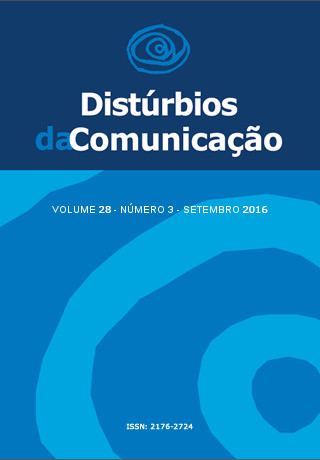Profile of communication in hospitalized adults and elderly
Keywords:
Language, Speech, Language and Hearing Sciences, Elderly, Adults, Hospitalized Patients.Abstract
Introduction: Language changes are often caused by chronic diseases interfering directly in the individual communication. Objective: to characterize communication by age and education of hospitalized adult and elderly patients and relate the results of the Boston subtests used. Methods: The study included 30 individuals, adults and elderly of both sexes, hospitalized in the Medical Clinic of a second-level Regional Hospital. The study excluded patients with lowered level of consciousness, mental illness, using tranquilizers and infectious diseases. The research included the application of an initial anamnesis, analysis of medical records and application of the oral comprehension and emission of the Boston test. The results were expressed in absolute and relative terms and for statistical analysis were used the equal proportion and correlation Pearson’s test. Results: The participants included 13 adults (43.3%) and 17 elderly (56.7%) with a median of 1.5 years of study. The worst performances were in the tests of auditory discrimination, complex ideational material, body-part identification, denomination and denomination by visual confrontation. There was no significant difference between results using normative values for age or education. There was a correlation between the results of auditory discrimination and body-parts identification; auditory discrimination and complex ideational materials; commands and body-part identification; nonverbal and verbal agility; repetition of words and phrases and auditory discrimination and denomination by visual confrontation. Conclusion: The tests in which the hospitalized patients of the study presented more difficulty involved oral discrimination and semantic access.Downloads
Metrics
Downloads
Published
Issue
Section
License
Copyright (c) 2016 Josefa Mariele dos Santos Rosário, Raphaela Barroso Guedes Granzotti, Rodrigo Dornelas, Danielle Ramos Domenis, Carla Patrícia H. A. R. César, Ariane Pellicani, Patrícia Aparecida Zuanetti, Kelly da Silva

This work is licensed under a Creative Commons Attribution 4.0 International License.









